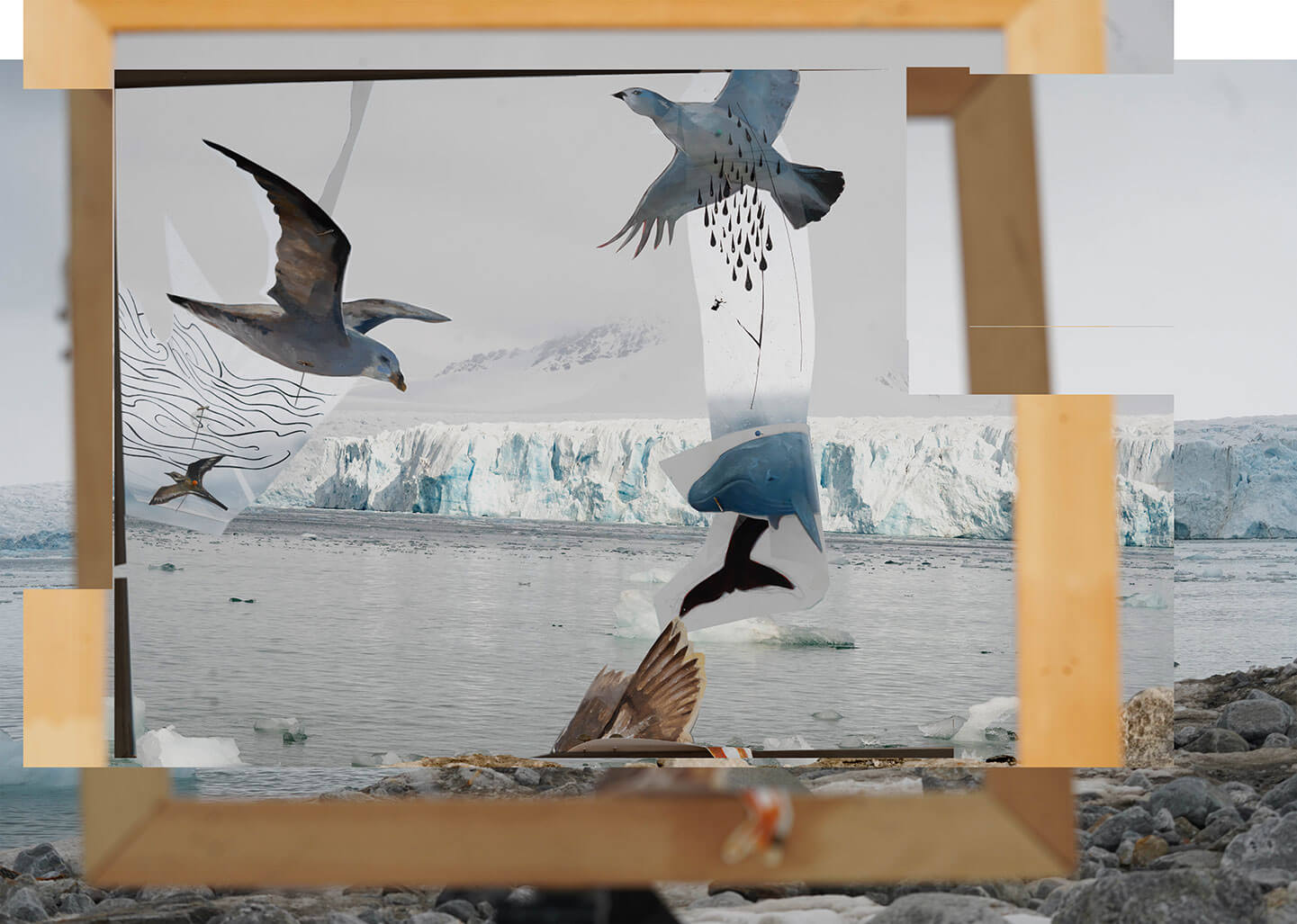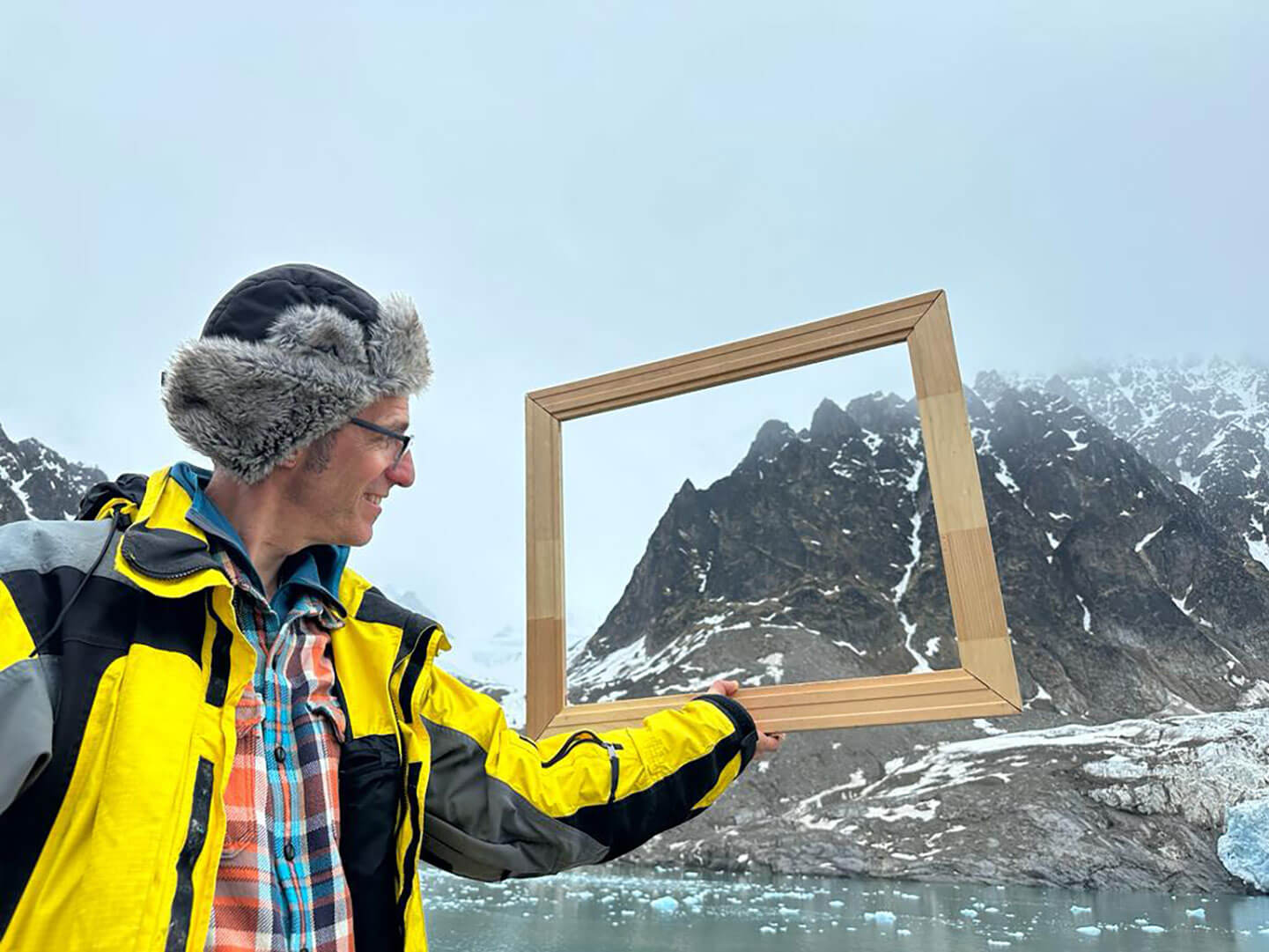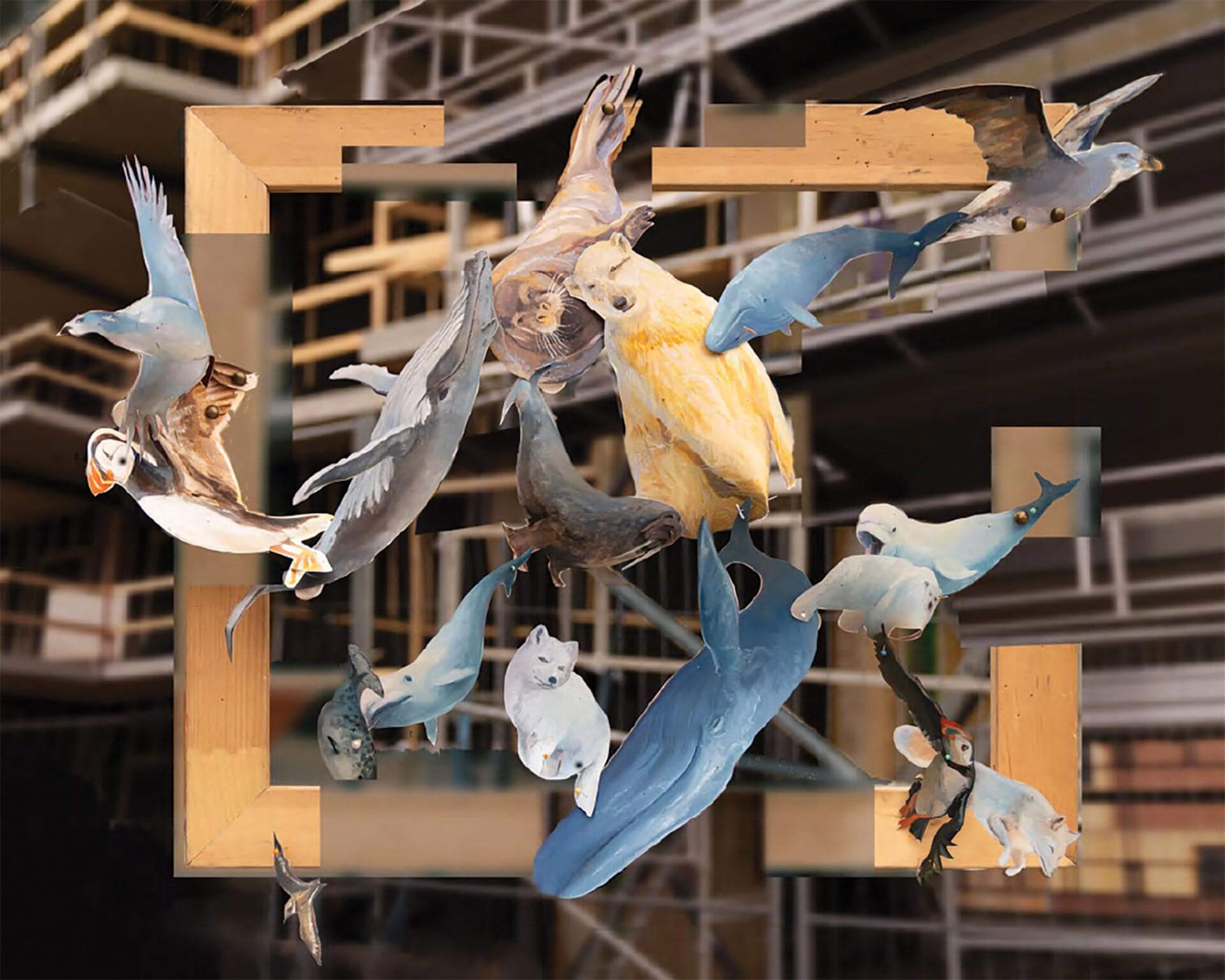When you are an artist, research can look like spending time with reindeer and puffins. This is the case for Redeemer University art professor Phil Irish, who was selected to participate in The Arctic Circle residency program that took place in June 2023.
Out of Svalbard, Norway, Irish embarked on a northern journey, spending one week at the Spitsbergen Artists Center and two weeks aboard the sailing vessel Antigua. Thirty artists and scholars were part of the trip, hailing from all around the world and specializing in diverse forms of media.
During his residency, Irish developed a new body of work. He made small oil paintings of animals, which he cut out to make collage elements. Using pins, needles and a wooden frame, he created a number of complex, three-dimensional models that interact with the physical world, which he then photographed. Like the biblical figure of Adam, Irish explains that he sought to see, name and be in loving relationship with the life around him through his works of art. His project expresses an awe of God, while seriously considering the Fall’s consequences.
“There was a sense of wonder, scale and beauty—but the fragility was very clear,” says Irish. “It made me ask, ‘How do we rethink things, do our theology well and live better as individuals and groups?’”

Through his Arctic exploration, Irish was keen on exploring humanity’s mandate to take care of the world.
“Part of the theme of my project was asking, ‘How might we reimagine our human agency to include the responsibility to serve the world’s other inhabitants, the animals, as opposed to building for our own gain?’”
A highlight for Irish was, on the final night, listening in as the sounds of creatures below cut through the silence of the sea. The thunderous, mysterious breath of the blue whale echoed throughout the deck. Job, says Irish, came to mind during this moment; this biblical figure talked to God about speaking to the earth and then listening to what it has to say in return: “But ask the beasts, and they will teach you; the birds of the heavens, and they will tell you; or the bushes of the earth, and they will teach you; and the fish of the sea will declare to you. Who among all these does not know that the hand of the Lord has done this? In his hand is the life of every living thing and the breath of all mankind” (Job 12:7-10).

Issues around land, landscape and space—and their transformation—have always been dominant themes in Irish’s art. Studying the earth and creation care are natural extensions of this fascination, and this trip gave Irish the opportunity to look more closely at these topics. Climate change is commonly referred to as a wicked problem, with solutions requiring the cooperation of nearly every discipline: economics, engineering, politics, science and more. For Irish, faith and theology have important places in this list.
How do we, using our area of interest and expertise, lean into God’s future? A big part of this is being a truth teller about the world’s problems.
“The idea that humans have dominion over creatures has often been poorly understood,” says Irish, adding that our kinship with other creatures, creatures we share the earth with, is something we don’t spend enough time thinking about. “I think my art plays a role in this. We ought to ask, ‘How are we here to serve?’ Art making is about paying attention to meaning in the world, but also being a meaning maker. As an artist, I hope to shape conversations.”
Irish sees his work as part of a wider tradition of redemptive artwork. This type of artwork, championed by Christian scholars such as Calvin Seerveld, lays bare the reality of our broken world, refusing to shy away from suffering.

“How do we participate in what God wants to do with this world?” says Irish. “How do we, using our area of interest and expertise, lean into God’s future? A big part of this is being a truth teller about the world’s problems.”
There was great opportunity, Irish says, in being with people from across the globe who all share a serious sense of urgency, communing on a ship surrounded by melting glaciers. For Irish, this experience epitomized art’s ability to transcend barriers; it connected people with diverse backgrounds and core convictions.
Irish has two art exhibitions booked for 2024 that will focus on the work he began during his residency.